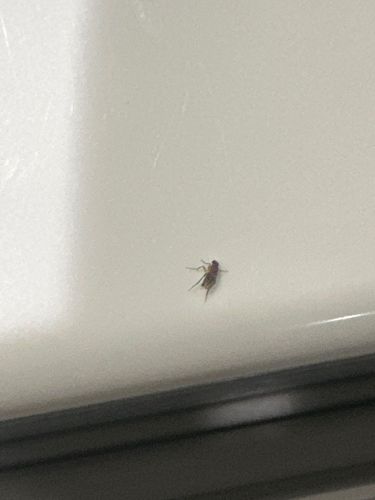Aphid (winged form)
Scientific Name: Aphidoidea (superfamily)
Order & Family: Hemiptera, Aphididae
Size: Typically 1-3 mm (0.04-0.12 inches) in length.

Natural Habitat
Gardens, agricultural fields, greenhouses, and any environment with suitable host plants. They are often found on the underside of leaves or on new growth.
Diet & Feeding
They are phytophagous, feeding on plant sap by piercing plant tissues with their stylets (mouthparts). They extract nutrients from the phloem of plants.
Behavior Patterns
Aphids reproduce rapidly, often through parthenogenesis (asexual reproduction). Winged forms (alates) develop when colonies become overcrowded or when host plant quality declines, allowing them to disperse to new host plants. They can be found in large clusters on plants. They excrete 'honeydew', a sugary substance.
Risks & Benefits
Risks: Aphids are significant agricultural pests, causing damage by direct feeding (leading to stunted growth, distorted leaves, or plant death), transmitting plant viruses, and promoting sooty mold growth due to honeydew. Benefits: They serve as a food source for various natural predators (e.g., ladybugs, lacewings, hoverfly larvae), making them important in food webs. Honeydew can also be a food source for other insects like ants, which sometimes protect aphids in return.
Identified on: 10/22/2025